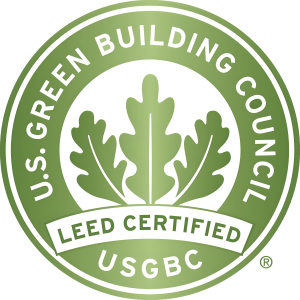What is the circular economy?
In a sense, the circular economy is a new way to look at old problems. The idea is to unlock the full value of materials, rather than wasting them. To unlock the value, we need innovative business solutions coupled with progressive policy that allows new economic models—concepts like designing for circularity, establishing real product take-back business models that work, leasing rather than owning materials, supporting refurbishment and remanufacturing, and innovating reverse logistics (how to recover used materials better).
All these concepts need new ideas, new solutions, and most importantly collaboration. The circular economy is the most powerful vehicle to bring all these stakeholders together to solve these problems. That’s why the built environment needs to engage.
How can the built environment be circular?
Today, we are in a mostly linear economy: Take, make, dispose. That’s what happens to buildings. We make them mostly out of virgin materials that are not very durable, and then when we’re done with a building, we tear it down and recycle 30–50% of the materials, and build something new.
A circular built environment looks very different. There are fewer virgin materials, and most of what makes up new buildings is coming from reused, salvaged, biobased or recycled materials. Further, our buildings last longer, are used more intensely (by more people, using more services), and are designed to be renovated and upgraded, rather than demolished. Finally, when buildings do near the end of their useful life, we salvage and reuse everything, so that landfill and waste become just a tiny byproduct of the process.
LEED v4.1 addresses many of these circular economy interventions, from promoting building reuse to designing spaces for flexibility, as well as encouraging reuse, salvage and recycling. We have points for all these strategies. We also support shifting from fossil-fuel based materials to sustainably harvested, biobased materials, a key component of moving away from a linear fossil fuel–based economy. We also must remember that the shift to biobased materials must include sustainable production and harvesting practices at the least, and must lead to regenerated ecosystems.
One case study for these principles is our Circular Products pilot credit in LEED v4.1. This credit addresses emerging areas of the circular economy for building products. These new concepts include:
- More accurate recycled content disclosure. It’s not enough to know if a product has recycled content; we need to know where it came from and if there are any legacy ingredients that may be harmful as the material is reused in new products.
- Design for circularity. We give credit to products that are designed to be disassembled and put back into commerce, rather than disposed of.
- Zero waste. Manufacturers are increasingly cutting their waste during manufacturing processes, a key element of circularity. Our TRUE Zero Waste is one program that helps support these goals.
- Closed-loop products. The pilot credit rewards products that are made anew or made again using post-consumer materials. Product leasing or sharing is also encouraged and gives more emphasis to remanufactured and refurbished products



